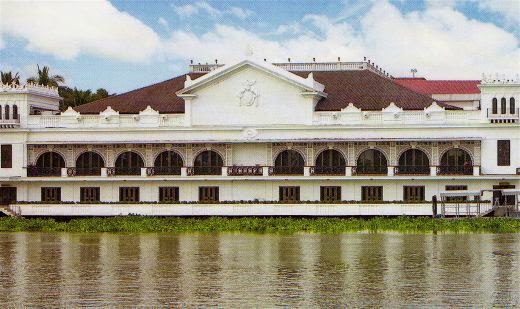Wild Life Sydney Zoo (formerly Sydney Wildlife World) is a wildlife park in the heart of the city of Sydney, Australia. Officially opened in September 2006, it is located on the city side of the Darling Harbour leisure and retail precinct, next to Sydney Aquarium and Madame Tussauds Sydney In May 2006, Sydney Aquarium Pty Ltd announced plans to expand the existing aquarium site, in order to incorporate a wildlife park. Following this announcement, and after the acquisition of the tourist attractions at Sydney Tower and of Manly Izanami, Sydney Aquarium Pity Ltd changed its name to Sydney Attractions Group. Village Roadshow Limited purchased Sydney Attractions Group in late 2007. UK attractions group Merlin Entertainments bought Sydney Wildlife World as part of its acquisition of Village Roadshow assets in March 2011.
The park changed its name to Wild Life Sydney Zoo (trademarked as Wild Life Sydney) and re-opened on 13 September 2011.
The attraction won the Award for the best family-focused tourism at The Australian's 2007 Travel and Tourism Awards
Wild Life Sydney Zoo is divided into 10 zones, containing the following exhibits:
Butterfly Tropics
Devil's Den (Tasmanian Devils)
Gumtree Valley (Koalas)
Wallaby Cliffs
Daintier Rain forest (Cassowary)
Kangaroo Walk-About
Kakadu Gorge (Crocodile)
Koala Encounters
Bugs Garden
Night Fall
WILD Discovery Zone
The Queen Victoria Building (or QVB), is a late nineteenth-century building designed by the architect George McCray in the central business district of Sydney, Australia. The Romanesque Revival building was constructed between 1893 and 1898 and is 30 m (98 ft) wide by 190 m (620 ft) long. The building fills a city block bounded by George, Market, York and Druid Streets. Designed as a marketplace, it was used for a variety of other purposes, underwent remodelling and suffered decay until its restoration and return to its original use in the late twentieth century.
3.Luna Park Sydney (originally Luna Park Mil sons Point, also known as Sydney's Luna Park) is an amusement park located in Sydney, New South Wales, Australia. Luna Park is located at Mil sons Point, on the northern shore of Sydney Harbour.
The park was constructed at the foot of the Sydney Harbour Bridge during 1935, and ran for nine-month seasons until 1972, when it was opened year-round. Luna Park was closed in mid-1979, immediately following the Ghost Train fire, which killed six children and one adult. Most of the park was demolished, and a new amusement park was constructed; this originally operated under the name of Harbour side Amusement Park before resuming the Luna Park name. The park was closed again in 1988 as an independent engineering inspection determined that several rides needed urgent repair. The owners failed to repair and reopen the park before a New South Wales government deadline, and ownership was passed to a new body. Reopening in 1995, Luna Park closed again after thirteen months because of the Big Dipper roller coaster: noise pollution complaints from residents on the clifftop above the park caused the rider's operating hours to be heavily restricted, and the resultant drop in attendance made the park unprofitable. After another redevelopment, Luna Park reopened in 2004 and has continued operating since.
Luna Park is one of two amusement parks in the world that are protected by government legislation; several of the buildings on the site are also listed on the Register of the National Estate and the NSW State Heritage Register. The park has been utilised as a filming location for several movies and television shows.
Eureka Tower is a 297.3-metre (975 ft) skyscraper located in the South bank precinct of Melbourne, Victoria, Australia. Construction began in August 2002 and the exterior completed on 1 June 2006. The plaza was finished in June 2006 and the building was officially opened on 11 October 2006. The project was designed by Melbourne architectural firm Fender Katsalidis Architects and was built by Grocon (Grollo Australia). The developer of the tower was Eureka Tower Pity Ltd, a joint venture consisting of Daniel Grollo (Garcon), investor Tab Fried and one of the Tower's architects Nonda Katsalidis. It was the world's tallest residential tower when measured to its highest floor, until surpassed by Ocean Heights and the HHHR Tower in Dubai. As of December 2013 it is the 14th tallest residential building in the world. It is currently the 98th tallest building in the world.
The Rocks is an urban locality, tourist precinct and historic area of Sydney's city centre, in the state of New South Wales, Australia. It is located on the southern shore of Sydney Harbour, immediately north-west of the Sydney central business district. The precinct and its immediate surroundings are administered independently of the local government area of the City of Sydney, by a New South Wales state government statutory authority, the Sydney Harbour Foreshore Authority.
The Rocks area borders on the Brad field Highway, leading to the Sydney Harbour Bridge, with the localities of Dawes Point and Millers Point, to the west. It is immediately adjacent to Circular Quay on Sydney Cove, the site of Australia's first European settlement in 1788.
















































